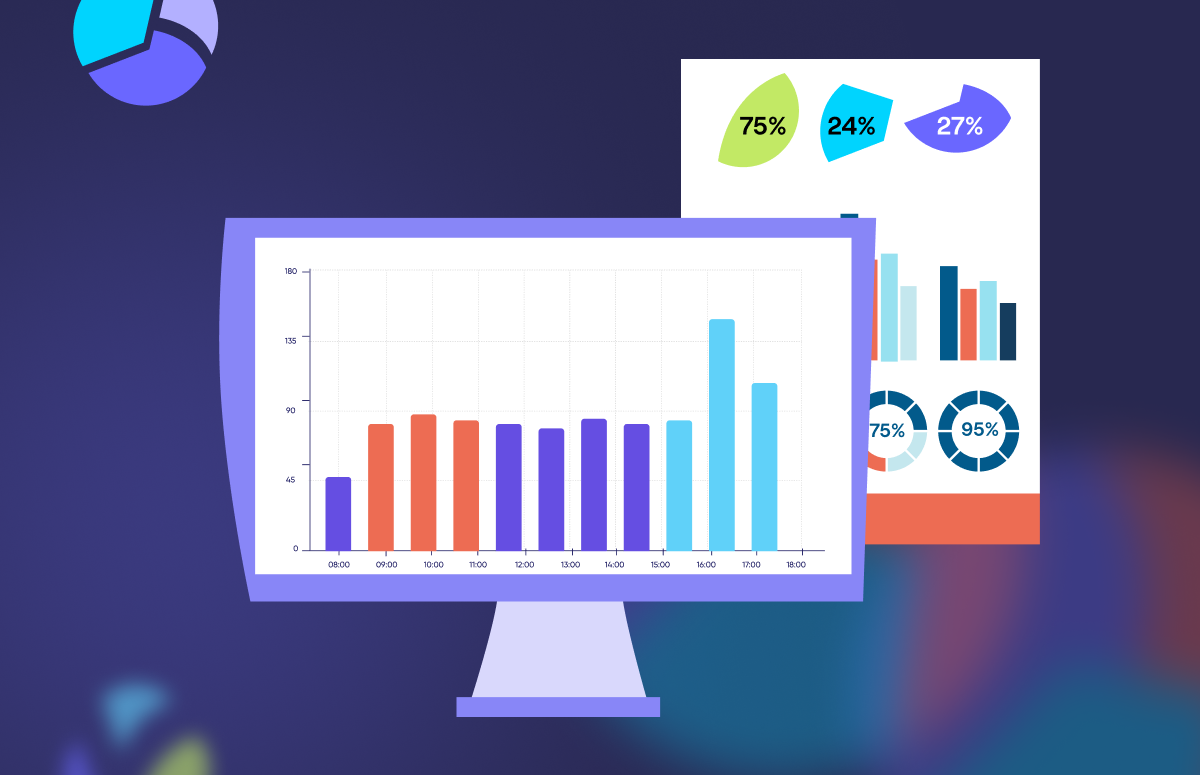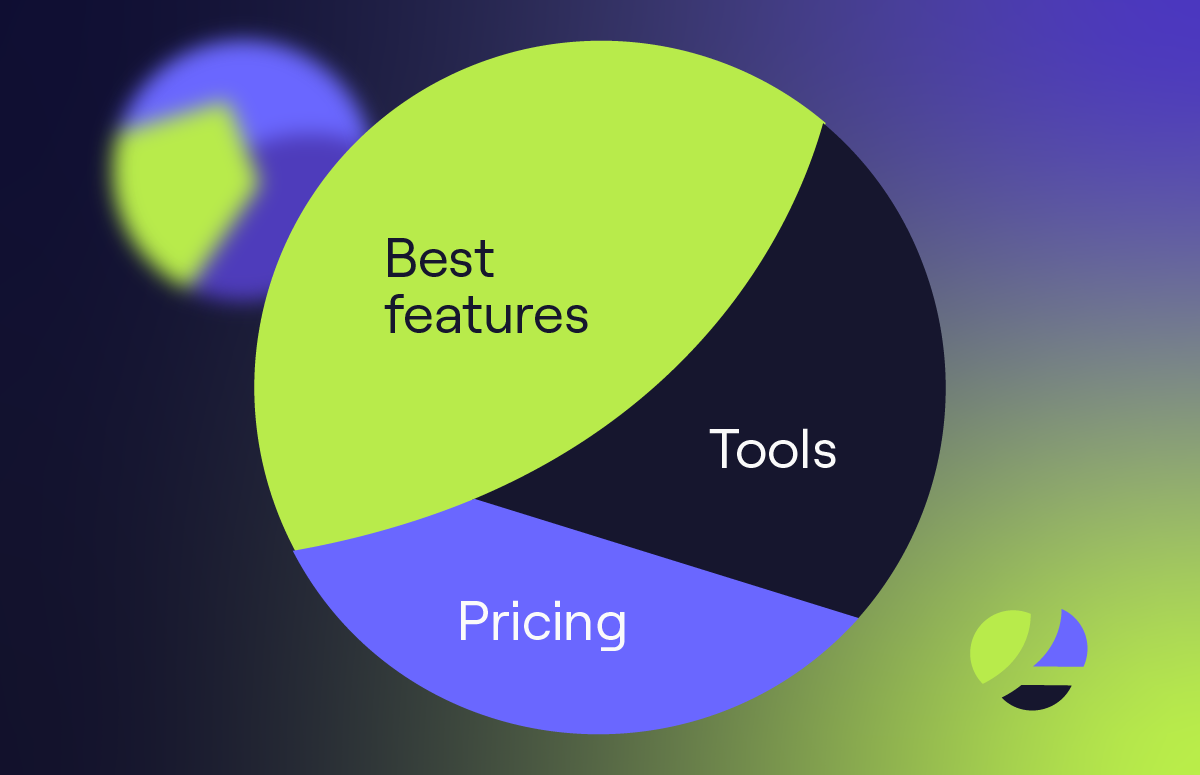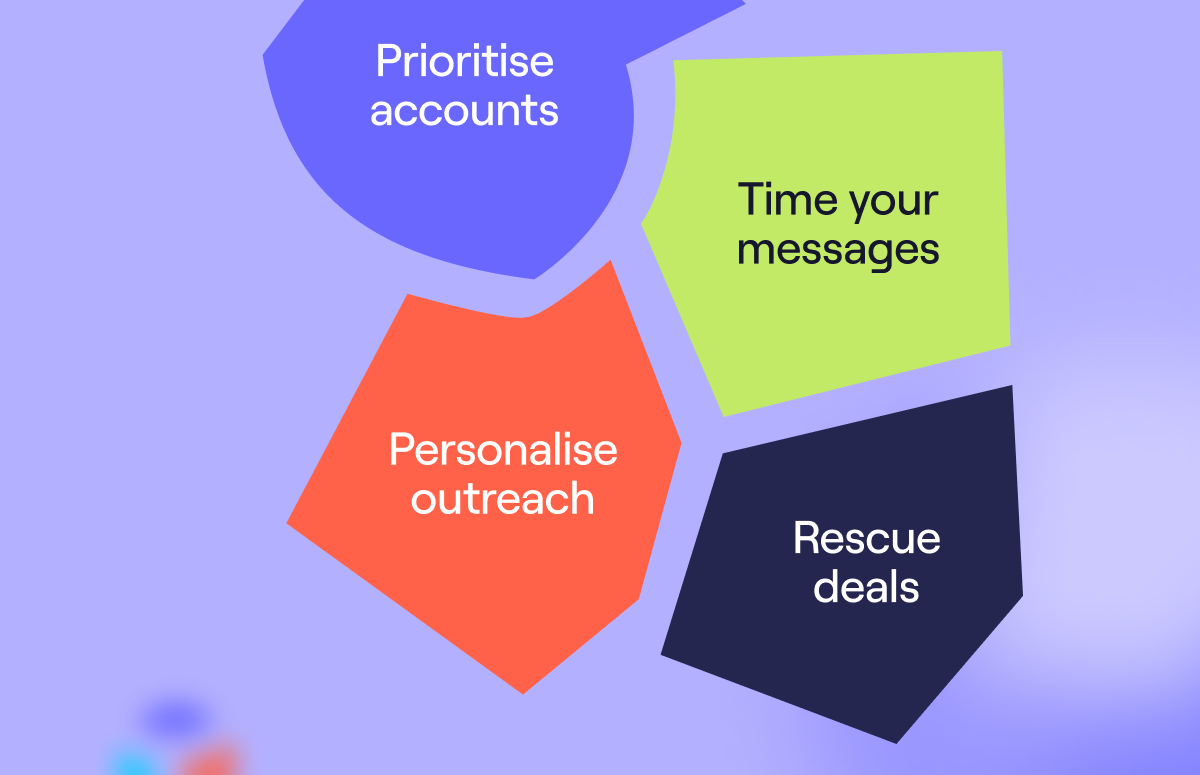CRM Cleaning: How to Clean Your Business Data
How long are your sales reps spending correcting email addresses, hunting down correct phone numbers, or otherwise making up for a messy and disorganised CRM?
If it’s been a while since you’ve given your CRM a good clean-out, it could be several hours each month.
That’s several hours that could be better spent identifying new target accounts, searching for intent signals, or on the phone with a prospect moving that deal down the pipeline.
In this guide, we’ll explain how a robust CRM cleaning process can improve sales pipeline velocity, reduce churn, and give your reps extra time back in their day.
Then, we’ll dive into seven straightforward steps for cleaning your CRM.
What is CRM cleaning?
CRM cleaning is the process of:
- Examining the B2B data in your CRM platform.
- Removing duplicates.
- Correcting errors.
- Standardising data formats.
- Expanding and enriching your CRM with additional data points that help your sales team to sell better.
The end goal is to enhance the sales process and improve your ability to serve customers.
CRM cleaning allows marketers to deliver more accurate and relevant messaging, prevents salespeople from wasting time on error correction, and can even support customer retention efforts by allowing for more personalised engagement.
Why is it important to clean your CRM?
A messy CRM with bad data can have serious consequences for an organisation, including:
- Productivity loss.
- Missed sales opportunities.
- Poor customer experience.
- Ineffective marketing campaigns.
- Compliance and legal risks.
- Decreased CRM adoption and usage.
- Increased churn.
- Higher operational costs.
Taking the time to clean your CRM, from identifying and removing duplicates to enhancing your CRM with additional customer data, helps resolve many of these issues.
It improves productivity, as it prevents reps from correcting data points and chasing down phone numbers or email addresses.
It helps you capitalise on sales opportunities by integrating real-time buyer intent signals that tell you who is ready to buy now.
And it helps improve marketing performance by opening up better segmentation and targeting capabilities.
7 steps for deep CRM cleaning
CRM cleaning doesn’t have to be a daunting task. These seven steps are practical and easy to implement.
1. Define your data governance rules
Data governance is the foundation of CRM data cleanliness. It’s all about how your organisation manages the data it collects, stores, and uses.
This is an important first step as it sets up the framework for deciding what data to keep and what to remove, among other things.
Defining your data governance rules involves:
- Setting up roles and responsibilities for data governance (defining who owns data management).
- Creating clear policies on data management (guidelines on how data should be collected, stored, updated, and when it should be deleted).
Compliance with regulations like the GDPR (General Data Protection Regulation) should be a priority here; your data must be processed lawfully.
2. Analyse your existing data set
Now that you have clear guidelines for what your CRM data should look like, turn your attention to your existing data. You must determine what needs to change.
Look for:
- Data points or practices that are non-compliant.
- Formatting inconsistencies.
- Missing fields.
- Duplicate accounts or people.
- Outdated entries.
3. Get rid of poor-quality data
Here’s where most of the actual cleaning takes place.
This is mostly about culling data, but it also includes some updates. Here’s what you should focus on:
- Duplicate records. These can be caused by manual data entry errors, data imports, or integrations with other tools. Removing duplicates is an easy first step.
- Outdated contacts. This includes leads that have changed companies, companies that are no longer relevant, inactive users, or accounts you’re no longer going after.
- Incomplete records. These are entries that are missing key information like email addresses, phone numbers, or demographic details such as company size or annual revenue.
- Incorrect data. Typos, misspelt names, or data entries that are inconsistent or non-compliant with your formatting requirements.
- Spam or fake leads. Junk data from bots or low-quality form submissions should also be removed.
This doesn’t have to be a cumbersome manual process. Several helpful tools support faster CRM cleaning.
Many CRMs have a deduplicate function built-in. From there, you can use a solution like Cognism to clean your CRM.
By integrating your CRM with Cognism, you can automatically update outdated contacts, enrich incomplete data records, and replace incorrect data points that are slowing your reps down. More on that later.
4. Standardise data and create data entry guidelines
Now that you’ve got your CRM looking fairly clean, it’s time to start thinking about how you’ll keep it that way.
Creating standardised data formats and data entry guidelines is a good step to take.
For standardising formatting, some best practices include:
- Defining naming conventions (e.g. using VP instead of Vice President).
- Standardised phone number formats (e.g., +1 (123) 456-7890 vs. 123-456-7890).
- Ensuring all date fields follow the same structure.
- Using dropdowns and predefined fields for data points like industries, countries, or job titles.
- Setting rules for addresses and locations (e.g., United States vs. USA).
Your guidelines can be a simple one-page document that outlines your data entry process, including the key fields and required formatting.
Make sure the document is distributed and accessible to anyone responsible for entering data, from SDRs to IT implementation teams.
Tools like Cognism, which can automate data entry and validation during CRM enrichment, are a great way to ensure these guidelines are followed accurately.
5. Enhance your CRM data
Cleaning up your CRM isn’t just about getting rid of old or outdated data points.
It’s also about making sure that the data you do have in your CRM is providing as much value to your revenue team as possible.
Now that you’ve standardised your data formatting, you need to look at data validation and enrichment.
Data validation is the process of ensuring new and existing records remain accurate and usable. Enrichment is about adding missing data points, such as additional contact numbers or the company’s industry.
The best solution here is to integrate Cognism’s CRM enrichment feature.
Here’s how it works:
First, you set up the native integration between your CRM and Cognism.
Then, Cognism automatically scans your CRM, fills in any data gaps, validates that data is correct, and updates any incorrect or outdated records
The end result?
High-quality data that helps you identify target accounts faster, improve lead scoring and routing, and accelerate pipeline velocity.
You can also use our Instant CRM Enrichment function to automatically enrich new accounts as they enter your database (e.g. via a lead form), ensuring sales has the information they need to follow-up quickly.
6. Categorise and segment data
Now that you’ve cleaned and enriched your CRM, you can better categorise and segment data to fuel marketing and sales campaigns.
You’ll want to focus on ensuring that:
- All data points are correctly categorised as leads, prospects, customers, lost deals, or inactive users.
- Firmographic and demographic fields like company size, industry, job title, and location are filled in, helping you refine targeting,
- Contacts can be grouped based on behavioural data such as website visits, email interactions, content downloads, or past purchases.
7. Establish a regular CRM cleaning cadence
One last step here.
Even with the best data cleansing process, CRM data still becomes stale over time. People leave companies, contact details change, and some organisations just straight up go out of business.
That’s why you should have a CRM cleaning cadence in place.
A smart way to automate this is to use Cognism’s Scheduled CRM Enrichment feature to regularly scan and analyse existing data points in your CRM. Cognism automatically updates stale data points and corrects data entry errors, keeping key fields accurate and actionable.
FAQs
How often should CRM data be cleaned?
The frequency with which you perform a full CRM clean depends on the size of your company, the data you store and process, and how well your team abides by data entry and governance practices.
A good idea is to perform different levels of cleaning at different intervals, such as:
- Ongoing and automated: Deduplication, enrichment, and validation.
- Quarterly: Database audits, re-segmentation, removal of inactive contacts.
- Annually: Review and update CRM workflows and automation rules, full database purge, run compliance checks.
What are the common challenges in CRM data cleaning?
Some of the most common challenges revenue teams face when cleaning their CRMs include
- User errors and lack of training.
- Improperly configured integrations.
- Resistance to the time investment required to clean a CRM.
- Lack of standardisation and guidelines.
- Compliance and privacy concerns.
Can CRM data cleaning be automated?
Yes, CRM data cleaning can be automated.
Solutions like Cognism’s Scheduled Enrichment feature can help you automatically identify duplicate records, update out-of-date contact details, and fill in blank data fields.
What are the best practices for maintaining CRM data hygiene?
The best practices for maintaining CRM data hygiene include:
- Using an automated data cleansing and enrichment tool.
- Standardising data entry guidelines.
- Regularly cleaning and auditing CRM data.
- Providing training to CRM users on data hygiene best practices.
- Using integrations to improve data accuracy and reduce manual processes.
- Removing unengaged and inactive contacts.
What is the best CRM cleaning tool?
Cognism Enrich is the best CRM cleaning tool.
Outdated and unreliable CRM data hinders your team’s ability to succeed. Cognism Enrich solves this by automatically:
- Cleansing and standardising data.
- Verifying and recommending contacts and accounts.
- Filling in missing data points.
- Removing duplicated profiles.
With a clean, refreshed CRM, your team will make smarter decisions and achieve better results.
By leveraging Cognism’s Enrich, our internal revenue teams achieved a 1.5x increase in booked meetings. With clean data, they could automate workflows and run more effective campaigns.


